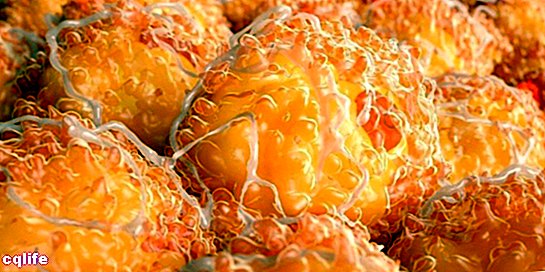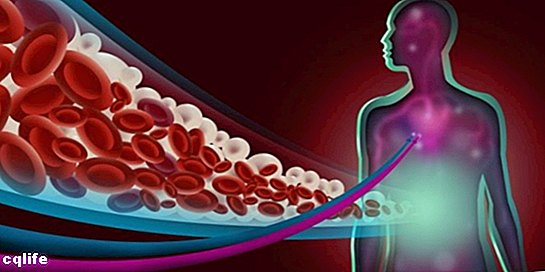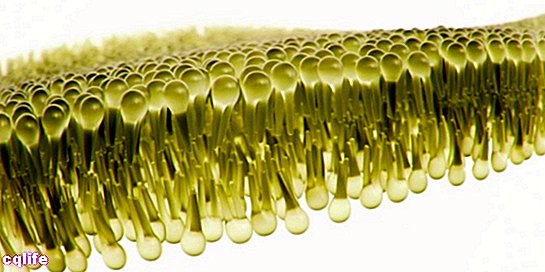We explain what a lipid is and its different functions. Also, how they are classified and some examples of these molecules.

What is a lipid?
Lipids are collections of molecules organic substances consisting primarily of atoms carbon, hydrogen and oxygen (to a lesser extent), and other elements such as nitrogen, phosphorus and sulfur. Lipids are hydrophobic molecules (insoluble in Water), but they are soluble in nonpolar organic solvents, such as benzine, benzene, and chloroform.
They can be made up of aliphatic chains (saturated or unsaturated) or aromatic rings. They are very diverse compounds due to their molecular structure: some are rigid, others are flexible and usually have linked chains linked by hydrogen bonds.
Some lipids, such as those that make up the cellular membraneThey have a hydrophobic and a hydrophilic layer, so that only on one side they can interact with water molecules or the like. This gives them great versatility and importance when it comes to being a structural part of the organisms.
Lipids are a vital part of the feeding of the living beings since many vitamins they cannot be assimilated unless they are in the presence of certain lipids. In addition, many fatty acids are essential for the metabolism animal.
At the same time, certain lipids form adipose tissue (commonly known as fat), which plays a role of support, protection and energy storage of great importance for the animal organism, although produced in excess it can also constitute a threat to the balance of the life.
Function of lipids

Lipids fulfill the following functions in the body:
- Energy reserve of the animal organism. Certain lipids known as triglycerides (three sugar molecules) constitute in the body of the animals (including the human being) the energy reserve par excellence. When there is excess carbohydrates, fat is generated to store and consume said glucose in the future since one gram of fat can provide 9.4 kilocalories to the body.
- Structural support of the body. Lipids serve as raw material in the construction of numerous biological structures (such as cell membranes). They also serve as a matter of fixation and physical protection of internal organs and of different parts of the body.
- Cell regulation and communication. Various vitaminsHormones and glycolipids are nothing more than fats secreted by various organs and ganglia of the body, which uses them as a mechanism for regulating various responses of the body.
- Transport. In conjunction with bile acids and lipoproteins, lipids travel from the intestines to their various destinations and serve as transport for other nutrients.
- Thermal protection. Body fat defends the inside of the body from the action of cold, since the greater the fat, the less thermal radiation it presents to the outside and, therefore, the less loss of heat.
Classification of lipids
Lipids or fats are classified, in principle, into two categories:
- Saponifiables. Lipids similar to waxes and fats, which can be hydrolyzed because they have ester bonds. For example: fatty acids, acylglycerides, cerides and phospholipids. In turn, they can be classified into:
- Simple. Its structure mainly comprises atoms of oxygen, carbon and hydrogen. For example: acylglycerides (which when solidified are known as fat and when they become liquid as oils).
- Complex They have (in addition to the atoms mentioned) abundant particles nitrogen, sulfur, phosphorus, or other molecules such as carbohydrates. They are also known as membrane lipids.
- Not saponifiable. Lipids that cannot be hydrolyzed because they do not have ester bonds.
Examples of lipids

Saponifiable lipids:
- Fatty acids. They are long molecules in the form of a hydrocarbon chain (-CH2-), with a terminal carboxyl group (-COOH) and several carbon atoms (2-24) in between. They can be of two types:
- Saturated fatty acids Made up of single links only. For example: lauric acid, palmitic acid, margaric acid, arachidic acid, etc.
- Unsaturated fatty acids. With the presence of double bonds that are more difficult to dissolve. For example: oleic acid, linoleic acid, palmitoleic acid, etc.
- Acylglycerides. They are fatty acid esters with glycerin (glycerol), the product of a reaction condensation that can store in this way one to three fatty acids: monoglycerides, diglycerides and triglycerides, respectively. The latter are the most important of all and are the ones that form adipose tissue.
- Phospholipids. Phosphatidic acid contains a glycerol molecule to which up to two fatty acids (one saturated and one unsaturated) and a phosphate group can bind, which gives a marked polarity to this type of compound. These types of lipids are the basic “brick” for cell membranes: choline, ethanolamine, serine, etc.
Unsaponifiable lipids:
- Terpenes Lipids derived from isoprene, of which they have at least two molecules. For example: some essential oils such as menthol, limonene, geraniol or chlorophyll phytol.
- Steroids Lipids composed of four fused carbon rings, which make up a molecule with hydrophilic and hydrophobic parts, and fulfill regulatory or activating functions in the body. For example: bile acids, sex hormones, vitamin D and corticosteroids.
- Prostaglandins. Lipids derived from complex essential fatty acids, such as omega-3 and omega-6. They are made up of molecules of 20 carbon atoms that act as mediators of the Central Nervous System, of immune system and inflammatory processes.
